Black Mission Fig
Black Mission Fig
SKU:EDB-FIG-BLA-NA-3G
Get Ready to Fig-ure Out Your Garden's Sweet Spot!
Introducing the Black Mission Fig – your next garden superstar! This isn't just any plant; it's a ticket to a lush, bountiful oasis right in your backyard. With its rich, purple-black fruit and strikingly decorative leaves, it's a feast for the eyes and the taste buds.
Why You'll Love the Black Mission Fig:
- Easy Peasy Growth: Even if you don't have a green thumb, no worries! This fig is low maintenance, so you can kick back and watch it thrive.
- Sweet Treats Galore: Imagine stepping outside to pluck juicy, homemade figs right off the branch. Perfect for snacking, baking, or sharing—if you're feeling generous, that is.
- Year-Round Beauty: With its lush foliage, the Black Mission Fig is not just a seasonal wonder but a year-round charmer.
Whether you're looking to jazz up your patio or start a fruit garden, the Black Mission Fig is your go-to. It's not just a plant; it's a lifestyle upgrade. So why wait? Let's turn that green space into a fig-tastic paradise!
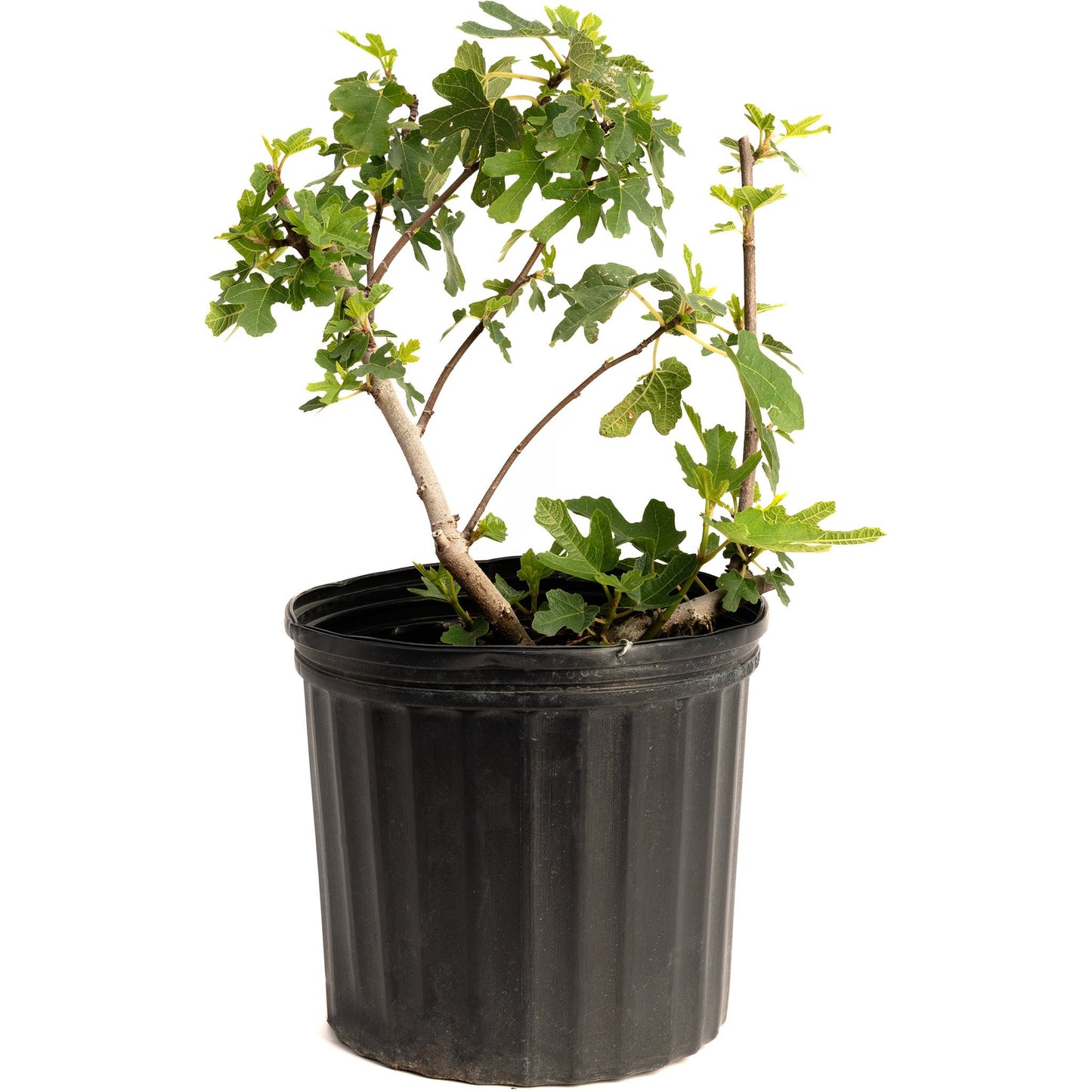
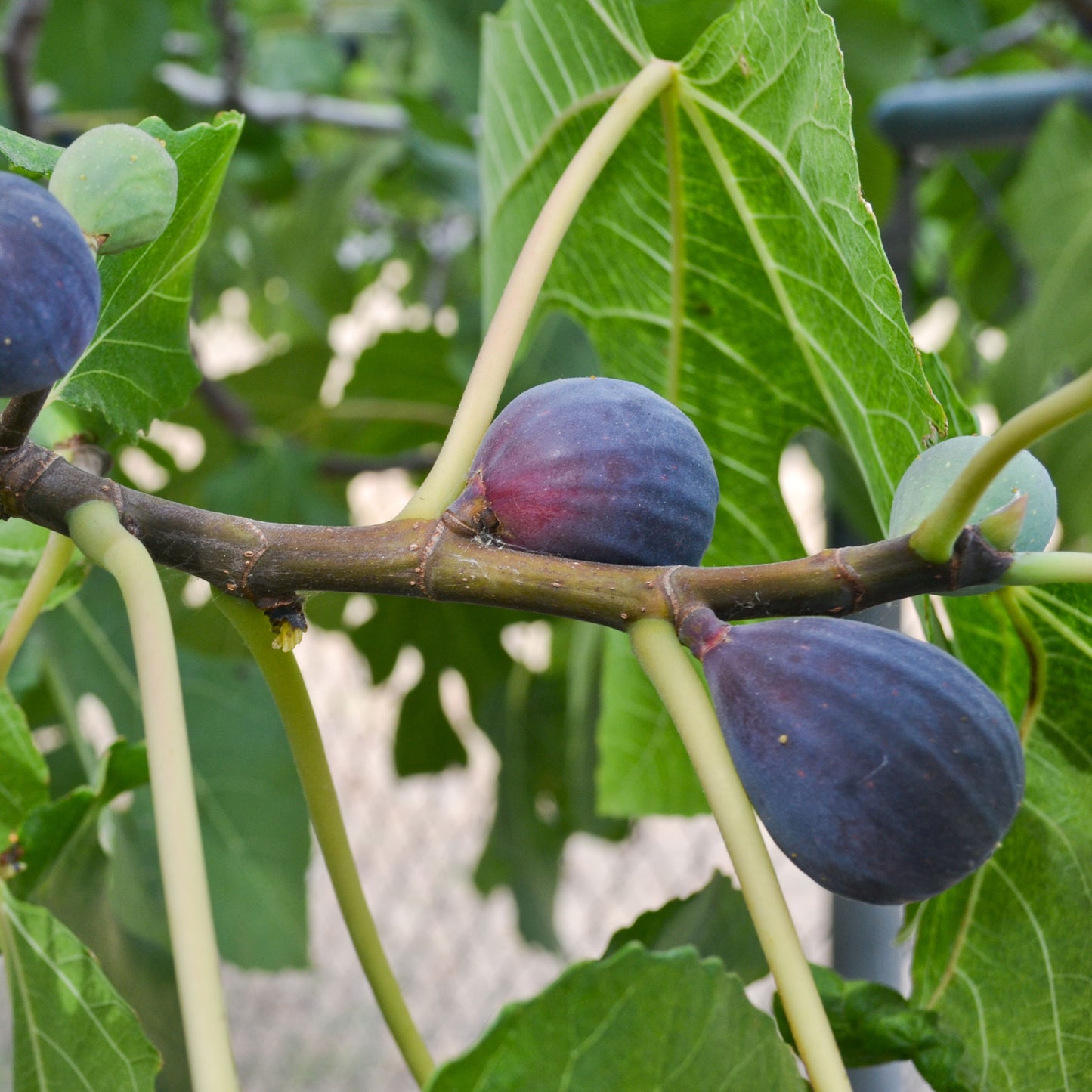
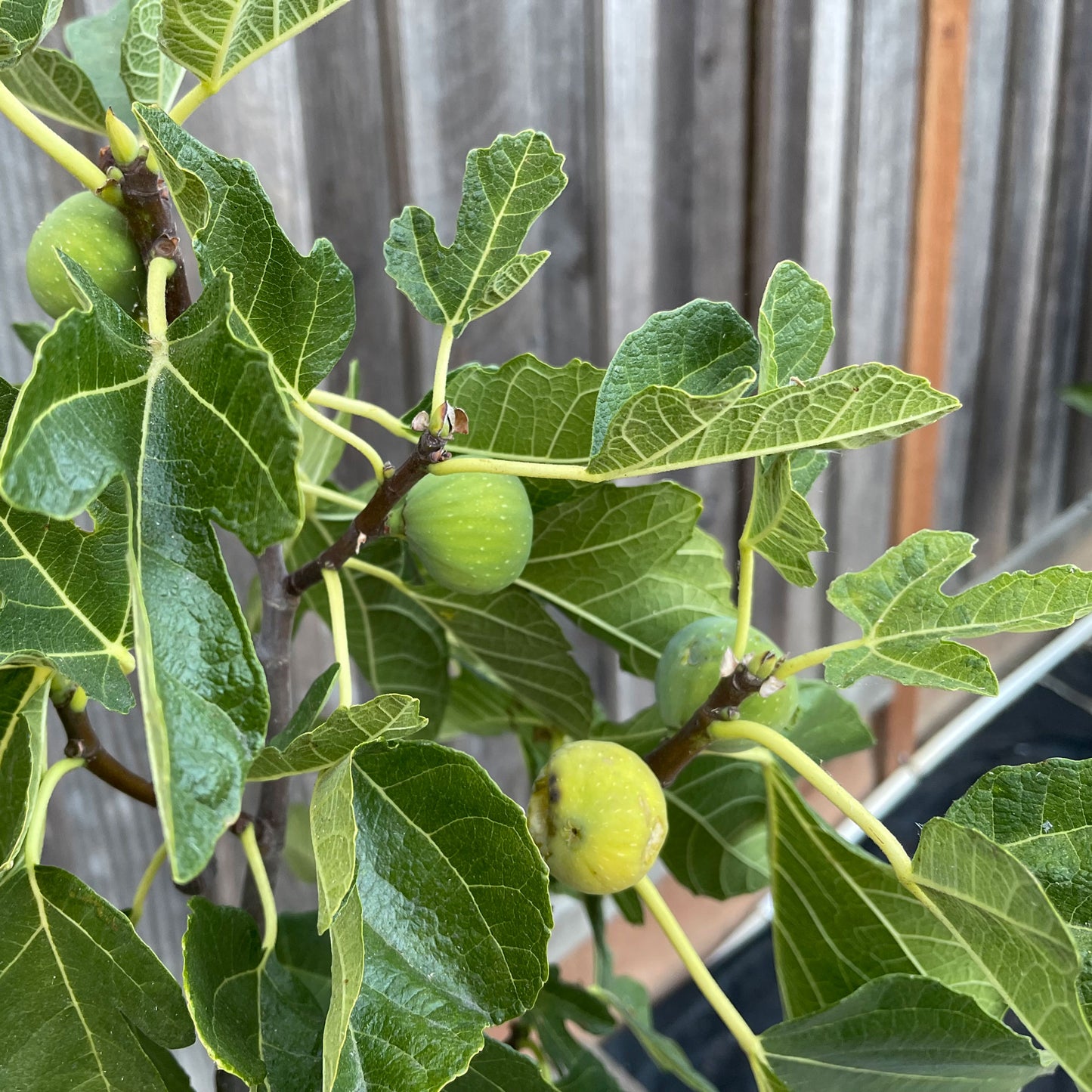
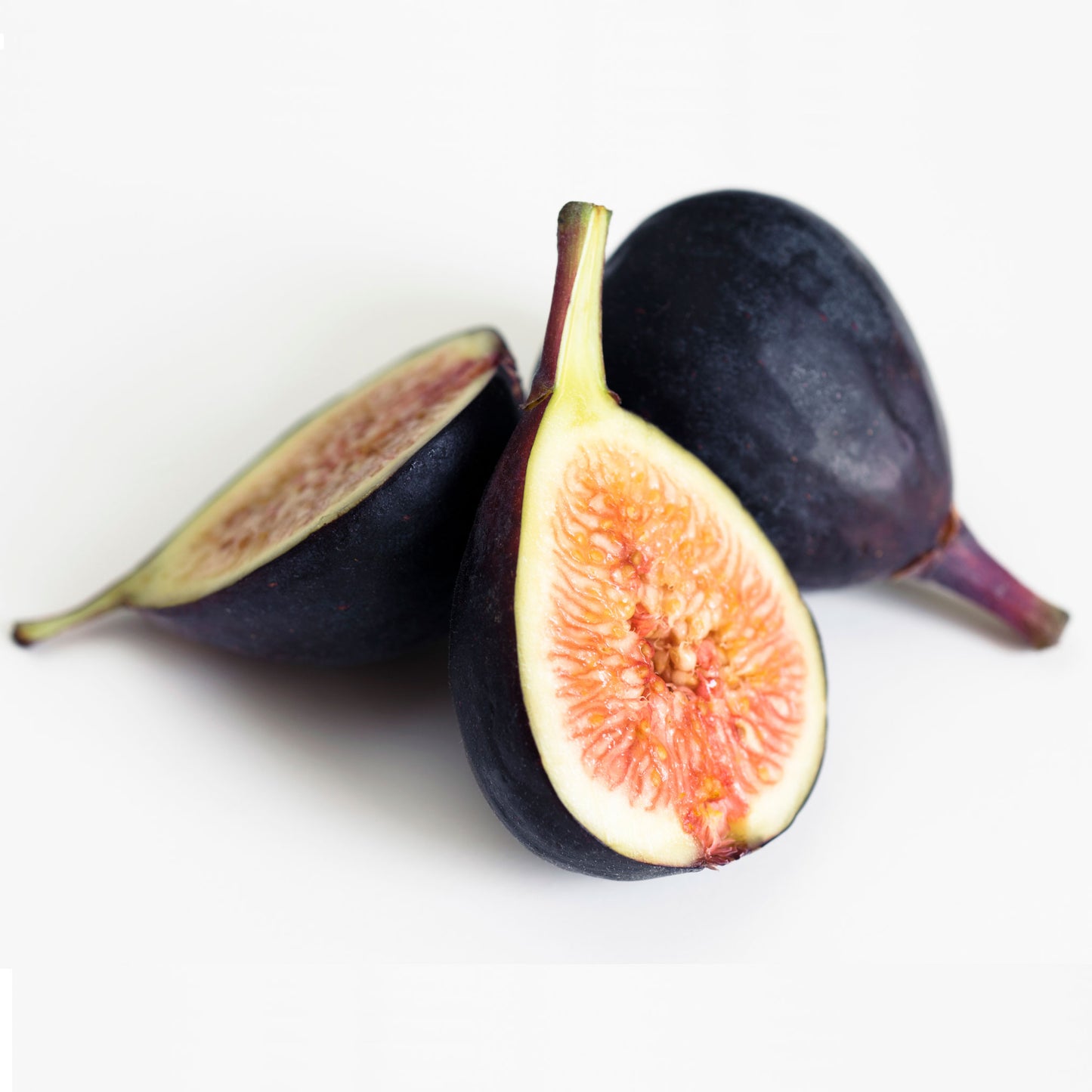
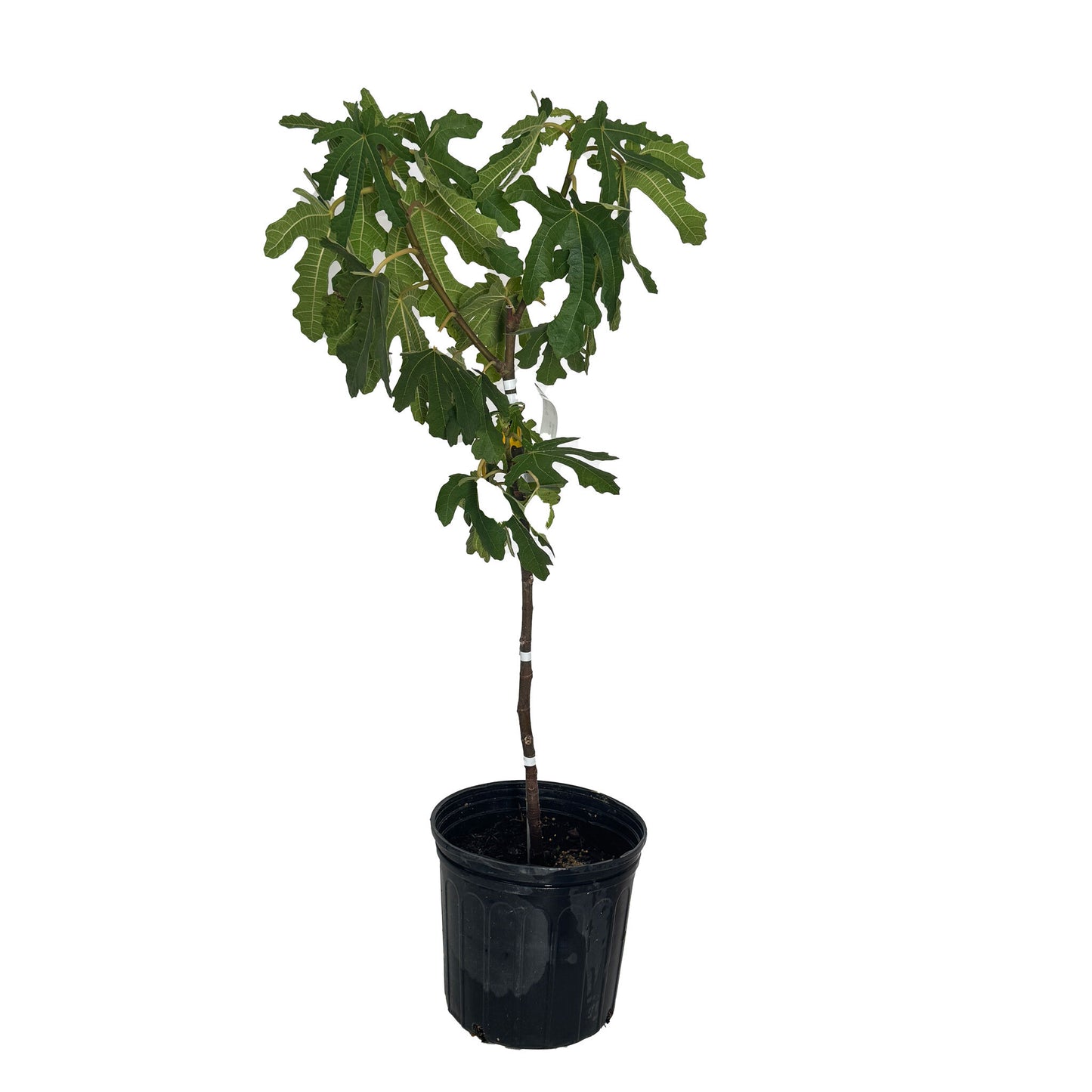
Product Details
-
Product Category
Edibles
-
Product Subcategory:
Figs
-
Botanical Name:
Dorstenia ficus 'Black Mission'
-
Does Not Ship To:
AZ, OR
-
Mature Height:
10-30 ft.
-
Mature Width:
10-20 ft.
-
Growing Zone:
7-10 outdoors
-
Indoor Growing:
-
Sunlight:
Full-Part Sun
-
Growth Rate:
Moderate
-
Harvest Time:
June - September
-
Bloom Time:
Spring

Planting Directions
<h2>Planting Black Mission Fig Trees</h2>
<p>To plant a Black Mission Fig tree, follow these steps:</p>
<ul>
<li><strong>Choose a sunny spot</strong> with well-draining soil. Figs need at least 8 hours of sunlight per day.</li>
<li><strong>Test the soil pH</strong>; figs prefer a pH of 6.0 to 6.5. Amend the soil if necessary.</li>
<li><strong>Space trees</strong> 15 to 20 feet apart to allow for growth.</li>
<li><strong>Dig a hole</strong> that is a few inches deeper and wider than the root ball of your fig tree.</li>
<li><strong>Place the tree</strong> in the hole, spreading out the roots. The root crown should be just above soil level.</li>
<li><strong>Backfill the hole</strong> with soil and water thoroughly to settle the roots.</li>
<li><strong>Mulch</strong> around the base to retain moisture and regulate soil temperature.</li>
</ul>
<h2>Care and Maintenance</h2>
<ul>
<li><strong>Watering:</strong> Keep the soil consistently moist but not waterlogged. Water deeply once a week, more during hot, dry periods.</li>
<li><strong>Fertilizing:</strong> Feed with a balanced fertilizer once a month during the growing season.</li>
<li><strong>Pruning:</strong> Prune in late winter to remove dead or crossing branches and to shape the tree.</li>
<li><strong>Pest Control:</strong> Inspect regularly for pests and treat with organic methods if necessary.</li>
</ul>
<h2>Pollination</h2>
<p>Black Mission Figs are self-pollinating, so you don't need another tree for fruit production.</p>
<h2>Harvesting</h2>
<ul>
<li><strong>Time:</strong> Harvest figs when they are soft to the touch and the skin changes color.</li>
<li><strong>Method:</strong> Gently twist the fruit off the stem. Be careful as figs bruise easily.</li>
<li><strong>Storage:</strong> Eat fresh figs quickly or store in the refrigerator for a short period. They can also be dried or preserved.</li>
</ul>

FAQs
<h2>FAQs for the Black Mission Figs</h2>
<h3>1. How do I plant Black Mission Fig trees?</h3>
<ol>
<li><strong>Choose a suitable location:</strong> Select a sunny spot with well-draining soil. Black Mission Figs require at least 8 hours of sunlight daily.</li>
<li><strong>Prepare the soil:</strong> Mix compost or aged manure into the planting area to enrich the soil and improve drainage.</li>
<li><strong>Dig a hole:</strong> Make the hole twice as wide and just as deep as the root ball of your fig tree.</li>
<li><strong>Plant the tree:</strong> Remove the tree from its container, gently tease the roots, and place it in the hole. Fill the hole with soil and water thoroughly.</li>
<li><strong>Mulch:</strong> Apply a 2-3 inch layer of mulch around the base of the tree to retain moisture and regulate soil temperature.</li>
</ol>
<h3>2. How do I water my Black Mission Fig?</h3>
<ul>
<li><strong>Regular watering:</strong> Water your fig tree deeply once a week. Allow the top inch of soil to dry out between waterings.</li>
<li><strong>Adjust for weather:</strong> Increase watering during hot, dry periods and reduce during rainy seasons or cooler months.</li>
<li><strong>Avoid overwatering:</strong> Ensure good drainage to prevent root rot, a common issue with fig trees when overwatered.</li>
</ul>
<h3>3. What is the best fertilizer for Black Mission Figs?</h3>
<p><strong>Use a balanced fertilizer:</strong> Apply a balanced 10-10-10 fertilizer in early spring as new growth appears. Repeat the application mid-summer to support fruit development. Avoid over-fertilizing, as this can lead to excessive leaf growth at the expense of fruit production.</p>
<h3>4. How do I ensure pollination of my Black Mission Fig?</h3>
<p><strong>Self-pollinating:</strong> Black Mission Figs are self-pollinating, so you don't need to plant multiple trees for fruit production. However, planting more than one tree can increase yield.</p>
<h3>5. When and how do I harvest Black Mission Figs?</h3>
<ul>
<li><strong>Timing:</strong> Harvest typically occurs in late summer to early fall. Figs are ready when they are soft to the touch and the skin begins to split.</li>
<li><strong>Method:</strong> Gently twist the fruit off the tree. Wear gloves to protect your hands from the fig's milky sap, which can be irritating to the skin.</li>
<li><strong>Storage:</strong> Figs are perishable. Store them in the refrigerator and consume within a few days for best quality.</li>
</ul>
<p>By following these guidelines, you can successfully plant, grow, and enjoy the fruits of your Black Mission Fig tree. Remember, patience and consistent care are key to cultivating a healthy and productive fig tree. Happy gardening!</p>






